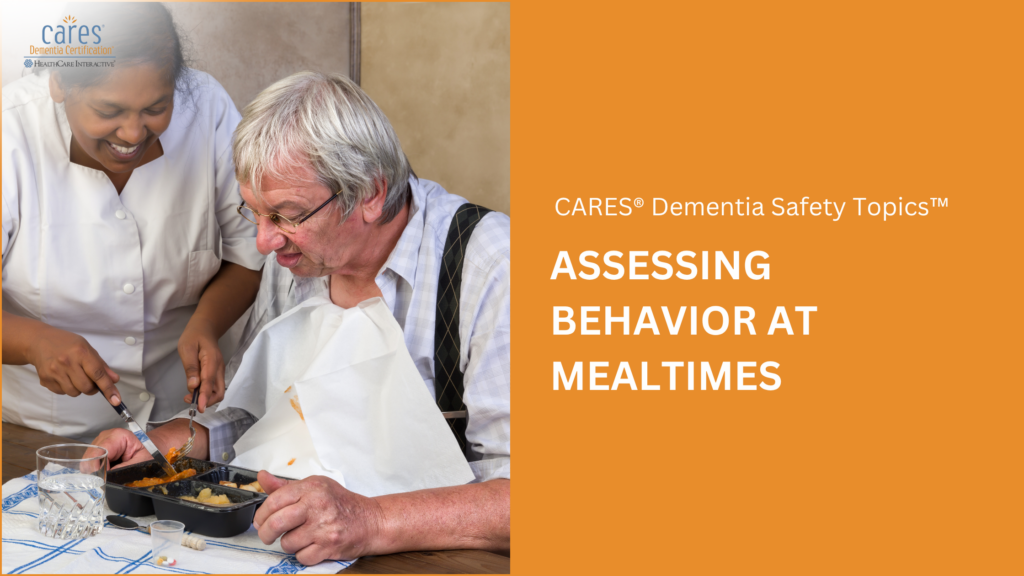Mealtimes can be a source of comfort and connection—but for people living with dementia, they can also become moments of confusion or distress. That’s why the CARES® Approach includes a crucial second step: Assess Behavior. Understanding the “why” behind a person’s actions during meals can help caregivers create a more positive, calm, and nourishing experience.
Why Assessing Behavior Matters
Behavior is a form of communication, especially for someone with dementia who may struggle to express their needs with words. If a person refuses to eat, leaves the table repeatedly, or takes food from others, these behaviors aren’t random—they’re signals. The key is to assess what the person might be trying to communicate through their actions.
Observing and Identifying Patterns
Start by observing what’s happening during meals. Ask yourself questions such as:
• When does the behavior occur? Is it only at lunch or dinner?
• Where is it happening? At the dining table, in a group setting, or somewhere more private?
• Who is present? Does the person behave differently depending on who else is at the table?
By noticing these patterns, you may uncover important clues. For example, if someone leaves the table when it’s noisy, they may be overwhelmed by the environment. If they take food from others, they may be confused about which plate is theirs.
Assessing behavior is not about judgment—it’s about curiosity and compassion. It’s about taking the time to truly see the person behind the behavior and meeting their needs with patience and understanding. When we look beyond the surface, we often find simple, meaningful ways to improve the dining experience for people living with dementia.
Supporting someone with dementia begins with understanding and compassionate care. To help you on that journey, we’re offering 10% OFF any training and certification program with code SunnyJuly at checkout—valid through July 31, 2025.

